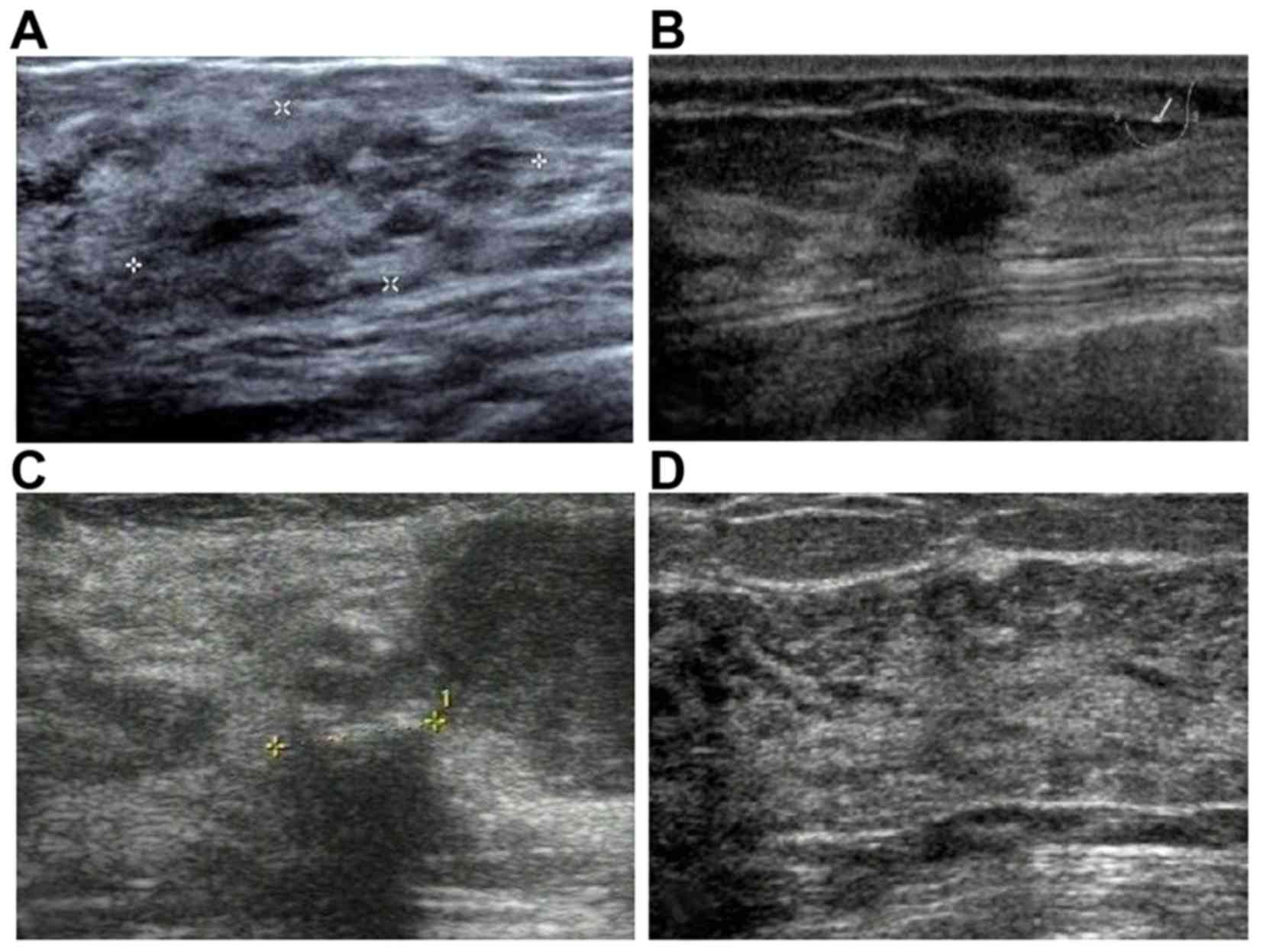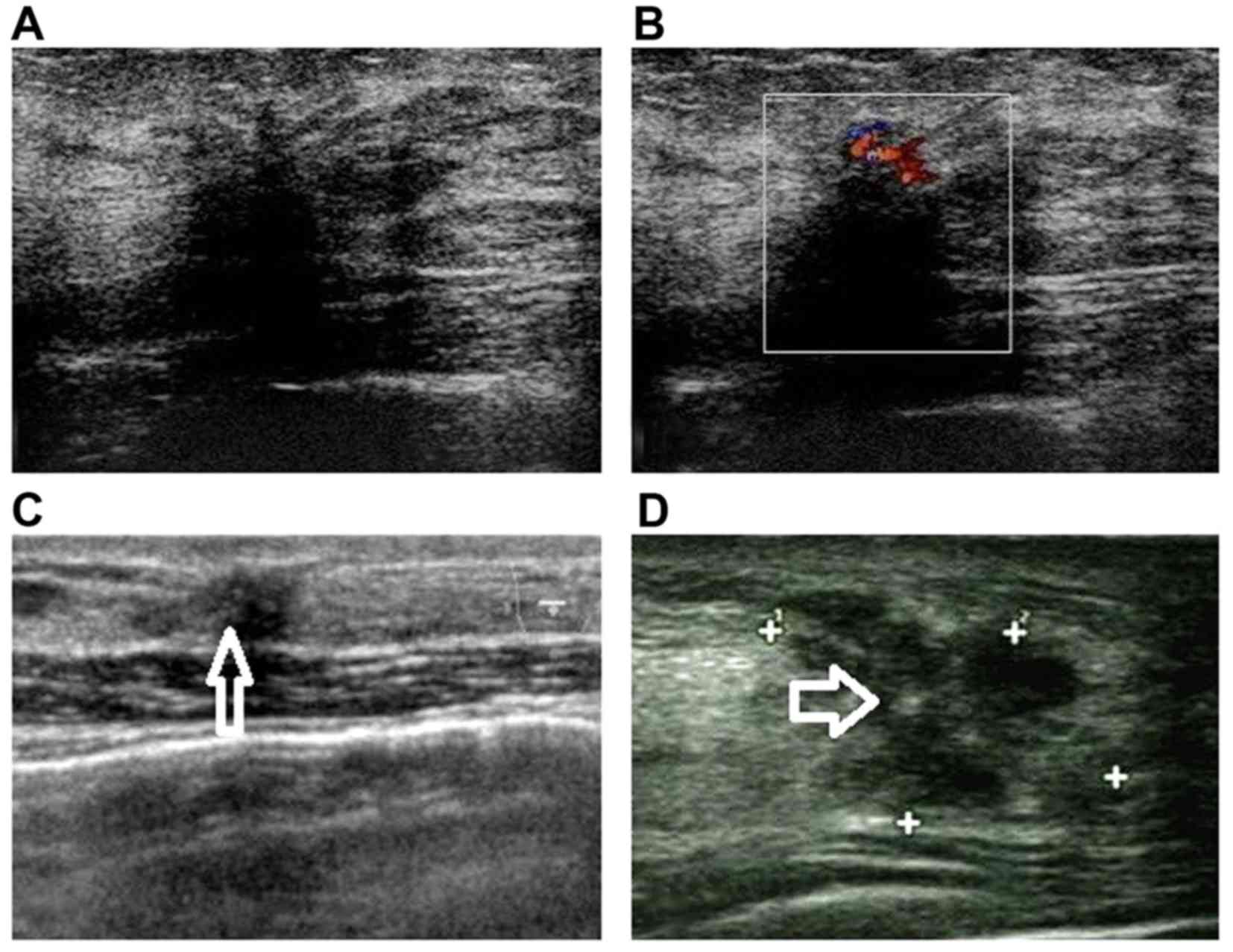Sclerosing adenosis: Ultrasonographic and mammographic findings and correlation with histopathology
- Authors:
- Published online on: December 13, 2016 https://doi.org/10.3892/mco.2016.1108
- Pages: 157-162
-
Copyright: © Chen et al. This is an open access article distributed under the terms of Creative Commons Attribution License.
Metrics:
Total
Views: 0 (Spandidos Publications: | PMC Statistics:
)
Total PDF Downloads: 0 (Spandidos Publications: | PMC Statistics:
)
Abstract
The present study was conducted to evaluate the radiological findings, particularly the ultrasonographic (US) characteristics of sclerosing adenosis (SA), and their correlation with histopathological results. A retrospective review identified 191 patients with a total of 200 lesions histopathologically confirmed as SA following breast surgery between July 2009 and December 2012. Of the 191 patients, 145 (151 lesions) with SA as the major component were included for US and mammographic (MG) analysis. All 145 patients analyzed were female, with a mean age ± standard deviation of 46.8±7.8 years (range, 25‑71 years). All 145 patients underwent US examination and the imaging findings included heterogeneously echogenic areas in 9.3% (14/151), masses in 51.7% (78/151), masses with calcifications in 13.9% (21/151), focal acoustic shadowing in 4.0% (6/151) and were negative in 21.2% (32/151) patients. Among the 119 lesions with visible abnormalities, 87.4% (104/119) were hypoechoic, 58.0% (69/119) were irregular in shape, 52.1% (62/119) had an ill‑defined margin, calcifications were found in 17.6% (21/119) and 7.6% (9/119) were hypervascular, while none of the characteristics mentioned above were significantly correlated with histopathology. A total of 136 patients underwent MG at the Fudan University Shanghai Cancer Center, and the imaging findings included microcalcifications in 31.6% (43/136), masses in 23.5% (32/136), asymmetric focal density in 14.7% (20/136), focal architectural distortion in 22.8% (31/136), and were negative in 7.4% (10/136). The mass lesions were fewer on MG compared with US (23.5 vs. 65.6%, respectively). The area under the curve of US distinguishing between benign and malignant lesions was significantly larger compared with that of MG (0.547 vs. 0.497, respectively; P=0.036). In the
60 lesions that were overestimated by Breast Imaging Reporting and Data System US category, one or more characteristics of malignancy were found on US imaging. The most common finding of SA was masses with or without calcifications on US and microcalcifications on MG. The accuracy of US was limited, but higher compared with that of MG; however, SA mimicking the characteristics of malignancy may contribute to misdiagnosis with US.












